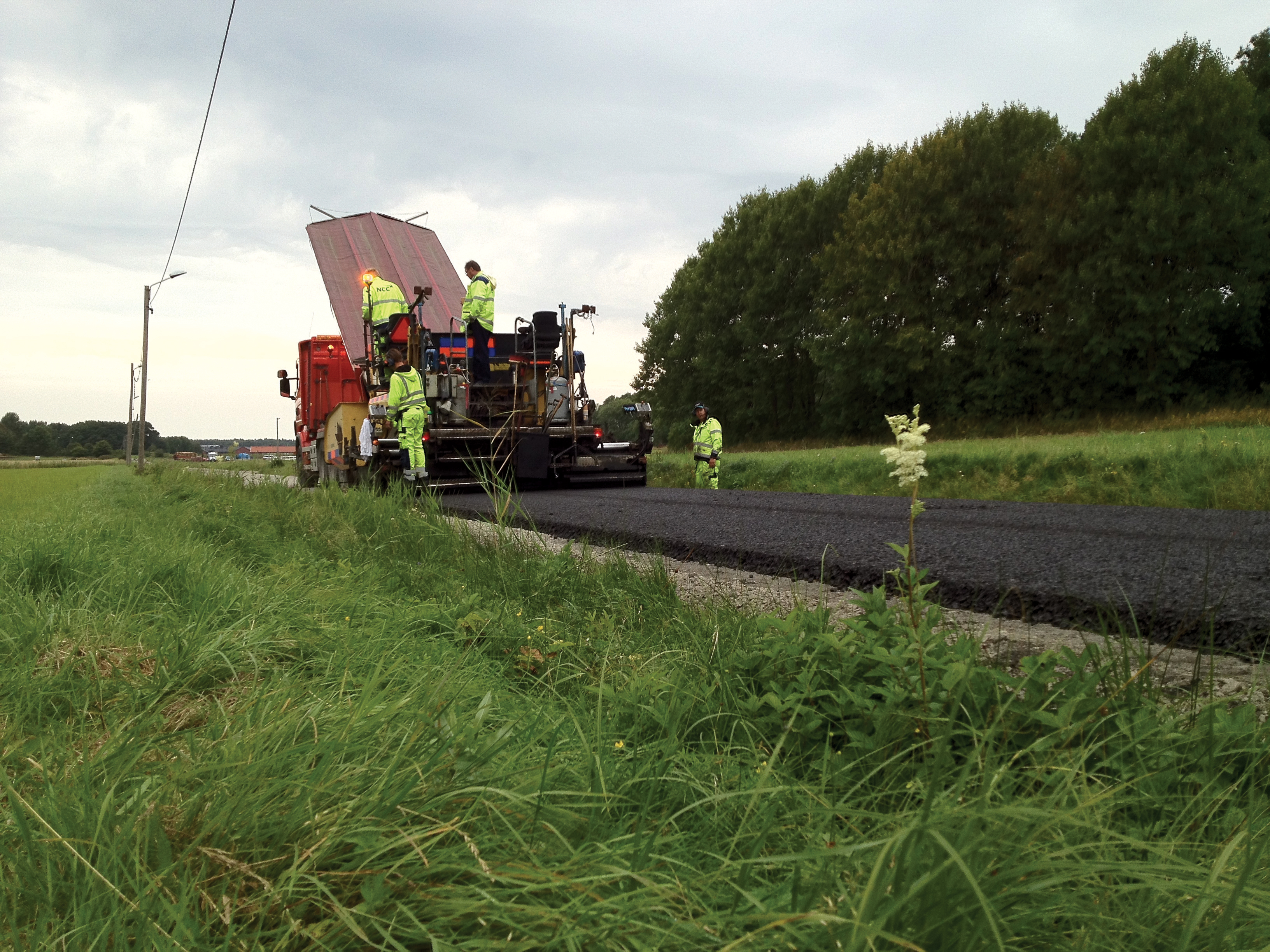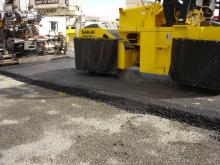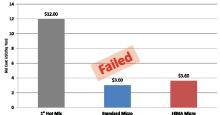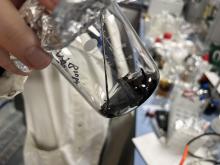
When World Highways decided to ask some of the industry’s leading suppliers what the future holds for bitumen, we found out - not surprisingly in the current economic climate - that it’s all about saving money. Kristina Smith reports
How quickly the tide turns. Just two years ago, saving carbon and the planet was moving up many countries’ political agendas. Now politicians in Europe and beyond have been forced to park commitments in the face of economic austerity.“The big issue with local government is that everything is driven by cost because of the economic situation,” says Dennis Day,
Cold mix can bring savings, when local authorities want to use RAP, says Day: “Cold mix offers much more flexibility, it can be overlaid sooner and is storable so that if material is left over at the end of the day, it can be used another day, which isn’t the case for hot mix.”
Looking ahead, Day sees cold mix establishing a niche for itself in the UK’s local roads, where the use of RAP and the reduction in truck movements required makes huge sense for the communities affected, and for the environment.
In Lithuania it is a different story, with cold mix bringing both performance improvements and cost savings on the country’s busiest motorway, the A1. Here, a 2.4km stretch was rehabilitated in 2011 incorporating a base layer made from cold mix using around 70% RAP and Nynas’ Nymuls RX emulsion, with a reported cost saving of 20% compared to a conventional solution.
In March this year, the Lithuanian Road Authority decided to use the method for a full-scale project, a 25km-long section, using the same composition.
“The outcome of the first trial has been successful,” says Nynas’ product manager Jan Ohman. “So they have decided to use the same principle on a longer stretch.” Over 150,000 tonnes of cold recycling will be involved, he says.
In Sweden four major contractors -
The latest trial, conducted by NCC, sees a comparison between hot mix and cold mix using virgin aggregate in the base layer, both with 22mm aggregate. The hot mix base layer contains 3.2% binder and the cold mix, called Base 22, contains 4.7% of Nymix emulsion.
The trial has been down a year, with tests to check the bearing capacity due in a few years’ time.
Honeywell
While some believe the future is cold, for others it’s warm. US firm Honeywell has developed a new asphalt additive, Honeywell Titan, which it says decreases energy usage and can save contractors money. In paving trials it decreased energy usage by 13 per cent and the number of roller passes by a third.“With our material you can mix, blend and pave all at lower temperatures,” said a Honeywell representative at the product’s launch in March this year. Lower temperatures means the paving season can be extended in some climates. Or in countries where fuel costs are high, there are benefits from energy savings.
Honeywell Titan, which is added at the asphalt plant, comes in a powder form and has a low molecular weight and a melting point of 115-140 degrees C.
A low weight, ethylene-based polyolefin, it is added in quantities of around 1-3% of the mix. It has anti-stripping properties, which can bring a further saving by reducing the need for additional anti-stripping additives.
A key feature is that it can help lower material costs and allows more efficient ‘grade bumping’. This means the contractor can bump up the asphalt quality from a base grade, with a low percentage of polymer use and without increasing the viscosity.
“We can meet the specification of a higher grade asphalt and grade bump, but without increasing the viscosity,” said Honeywell. It can also be recycled easily.
The additive has been used on a road in Germany, in two lower layers featuring 50% RAP and a top layer containing 20% RAP. For this application, Honeywell Titan reduced the asphalt temperature from 180oC to 155oC.
In Alaska in 2012 a paving job was carried out in ambient temperatures of +1oC to -6oC, with this lower temperature being possible due to the addition of the polymer. Conventional methods would require paving and compaction processes to cease when ambient temperatures drop below 5oC.
Peer-reviewed data demonstrates that adding Honeywell Titan to asphalt can reduce paving-related emissions of sulphur dioxide by 82 percent, nitrogen oxides by 43 percent, volatile organic compounds by 19 percent, and carbon dioxide by 18 percent, says Honeywell.
Kraton
IfUltimately this could mean roads perform better and last longer – and cost less than a conventionally constructed highway.
“There are a lot of different materials that are used for modifying asphalt today,” says Kraton Polymer senior R&D scientist Bob Kluttz. “All of them improve the performance of bitumen. Some soften it to make it more rut resistant. SBS polymers toughen it too so that it’s also more crack resistant.
“One of the things we do that’s unique is we are able to add such a high level of modifier to get that extra level of toughening.”
Polymer modified bitumen has come a long way since the first one was patented in – would you believe it – 1843. Nowadays, the most commonly used polymer is SBS (Styrene-Butadeine-Styrene) which accounts for around 65% of the market. The other 35% is made up from EVA, poly-ethylene, SBR, poly-butadeine, Elvaloy and waste products such as ground tyre rubber.
Kraton, which has been developing polymers for modifiying bitumen for over three decades, had a breakthrough in the late 1990s, when it produced a polymer with a higher vinyl content. D-1192 gave lower viscosity, better thermal stability and better compatibility with bitumen than standard SBS.
The next step up came with the launch of polymer D0243, which is used to produce what Kraton calls HiMA (Highly Modified Asphalt). Introduced in 2009, Kluttz expects its acceptance to take 10 years, the normal timeframe for new technology.
Kraton has conducted trials in several countries, over two dozen to date, ranging from major structural work to thin emulsion micro surfacing. Though Kraton keeps an eagle eye on all its trial projects, the fact that there have been no significant construction issues is good news, too says Kluttz. “The message for me is that our technology is at least as forgiving as any normal kind of paving.”
For the time being, says Kluttz, there are no comparable products to D0243. “We are not aware of any other technology that will give a material that is so easy to use and such a high level of performance,” he says.
In the future, mixes which combine polymer modification with other materials could bring competition from others – and also further improvements from Kraton, says Kluttz. “The first step is to introduce the technology. Then we can optimise it.”
Massenza’s SEALMASS solves joint challenge
Italian contractor Pizzarrotti is using
A special hot oil arrangement is used in the melting chamber, for all fixed and flexible piping and, very importantly, for the entire hand spray lance. This means the product stays hot and liquid from the melting chamber until the very last application point, ensuring an easier and high quality application, even with very high viscosity compounds.
The SEALMASS M5 machine has been designed by MASSENZA - world leader in bitumen handling equipments – specifically for melting sealing compounds and applying them to cracks and joints.
Particular attention has been paid to ensure improved efficiency at the work site and proper safety and protection during the machine’s operation. The unit’s hydraulic control system is able to work even under severe climate conditions. Control of both thermal oil and mastic temperature is managed automatically by the control panel.
On request, the unit can be equipped with a hot-air lance for drying and cleaning of the cracks and joints before sealing operations.











